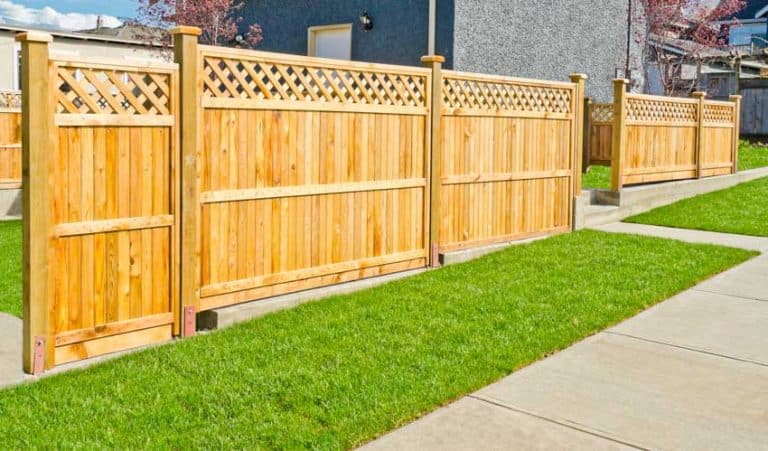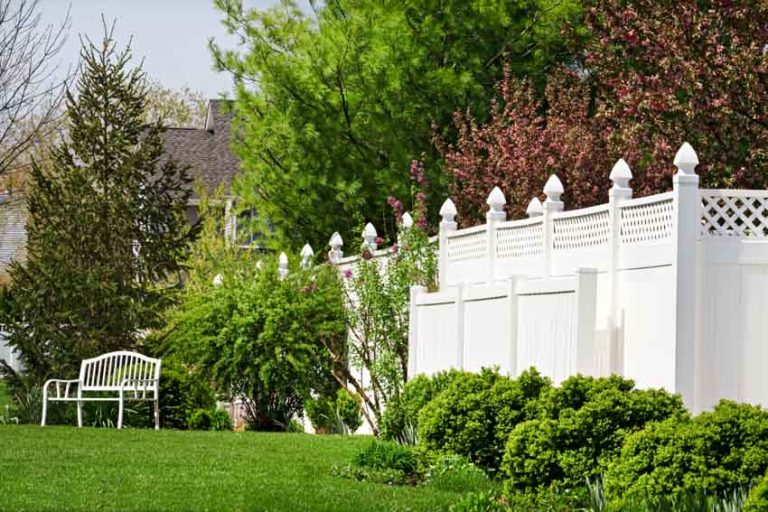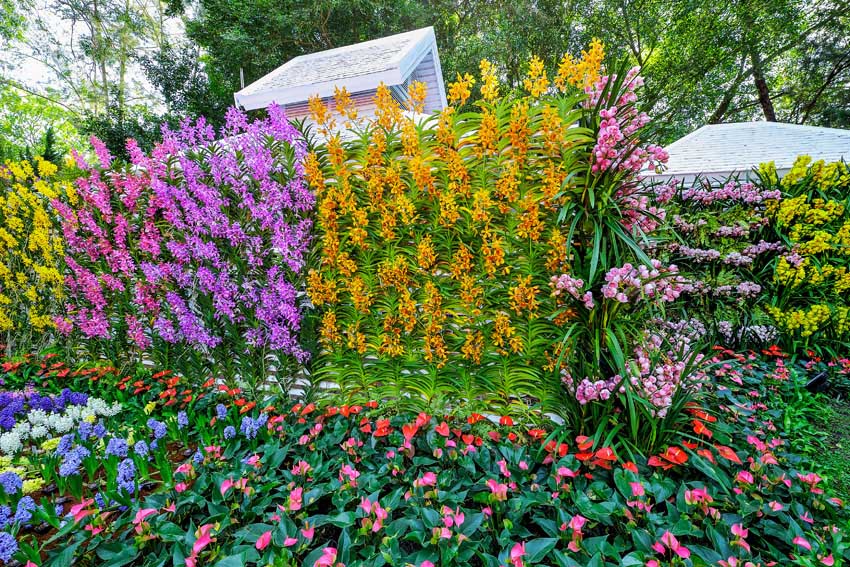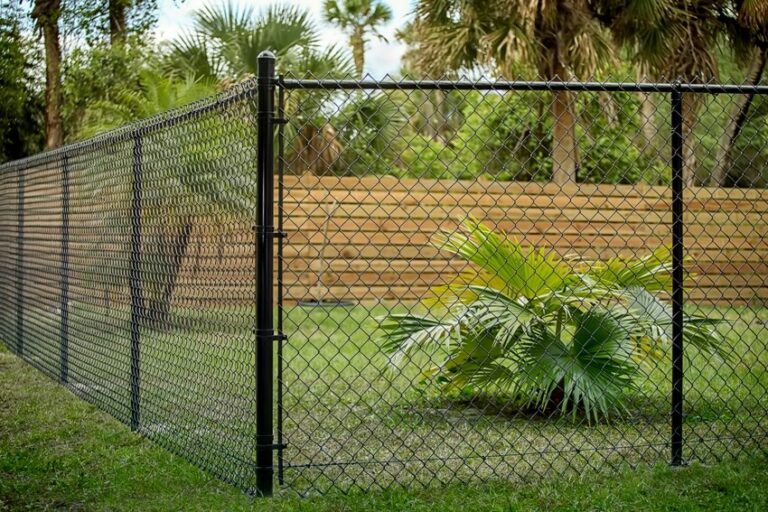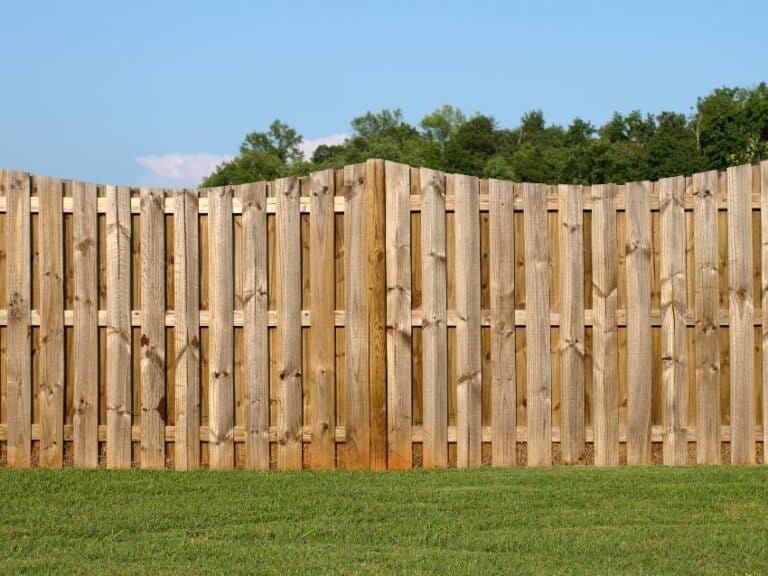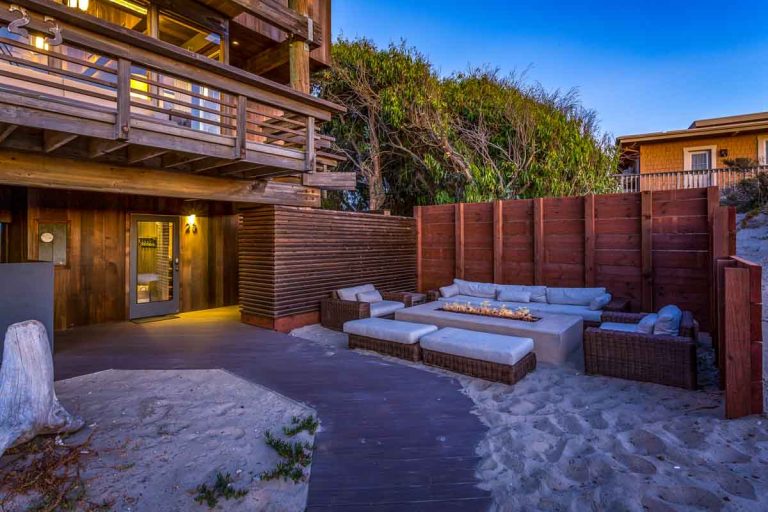Mahogany Fence (Pros and Cons)
Here we share our mahogany fence guide including the different wood species, pros and cons, cost, tips on staining, painting, and if mahogany is good for fencing.
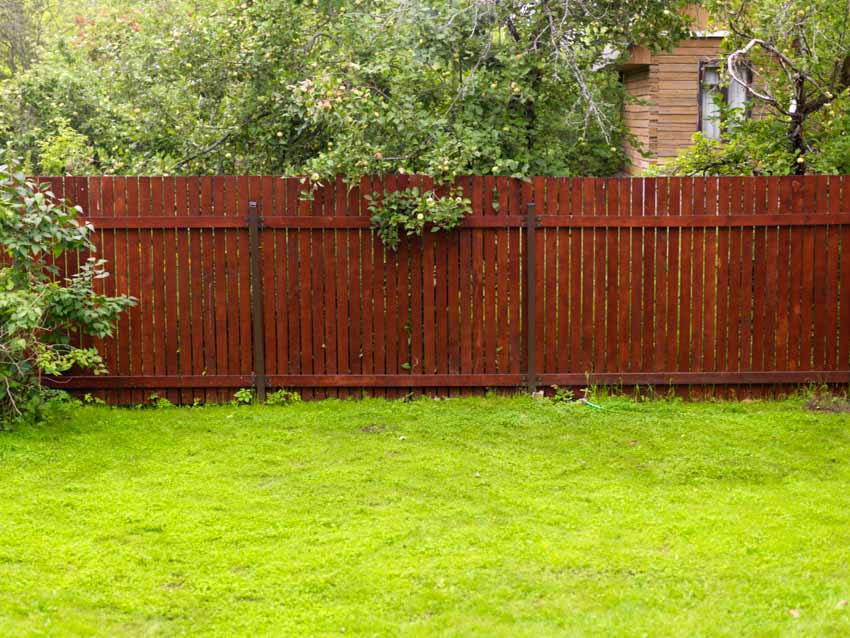
Mahogany can come in a myriad of different applications and one of them would be in the form of fences. This wood is deemed to be perfect for paneling, veneers, furniture pieces, and of course, fences.
Mahogany Wood Species For Fences
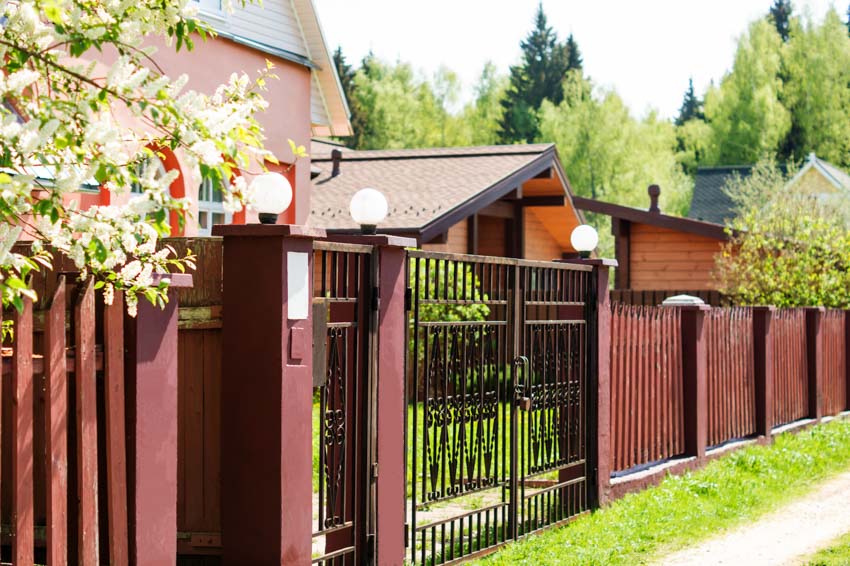
• African Mahogany
• Cuban Mahogany
• South American Mahogany
• Honduran Mahogany
Pros And Cons Of Mahogany Fencing
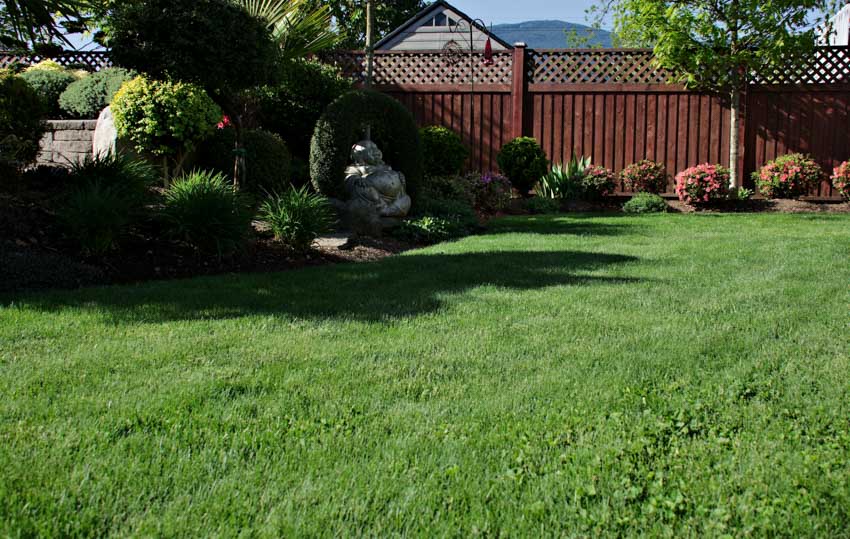
Pros of Mahogany Fences
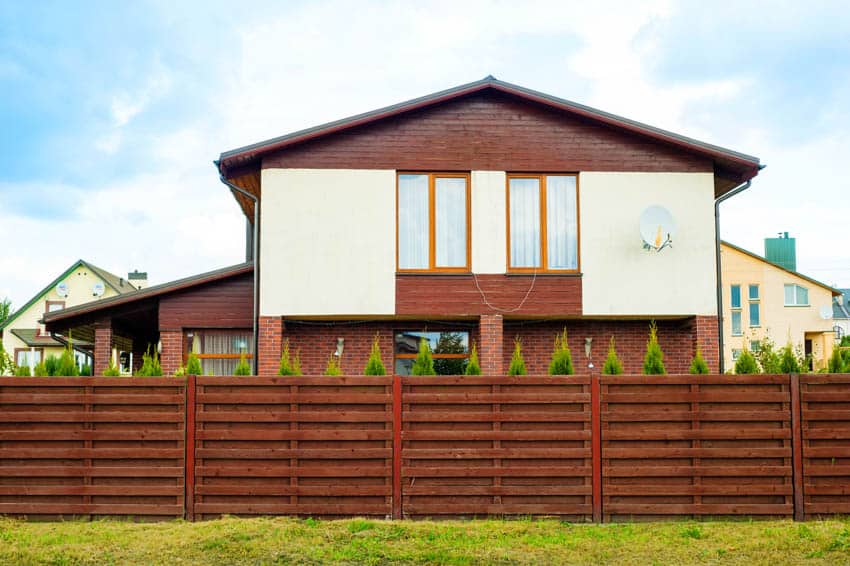
What this means is that your mahogany fence has the means to last you for more than 20 years with little to no care at all and more than 40 to 50 years with proper care and maintenance.
• Great-looking wood grain and effect: Mahogany is quite popular because of its red-brown color. This color is quite rich and deep and as striking as can be. There can be other color variants depending on how young or old the tree is which adds to the attractiveness of the wood material.
• Water-resistant: Fences are exposed to the elements all the time and mahogany fences are no exception. But mahogany can hold up extremely well to water exposure and all the other things that the elements may bring because the wood comes with its own natural oils, making it water-resistant; a trait valued for wood fittings you put up outside.
• Easy to work with: Hardwoods are great but they can at times come with a reputation of being hard to work with for craftsmen and woodworkers. This is not the case with mahogany. It’s easy to work with, even with hand tools. This makes it possible for you to even embellish your mahogany fence designs with carvings and other patterns, should you wish it.
• Holds paint and polish well: Paint and polish can preserve the integrity of your wood fence and extend its life span. Not all woods hold them well though.
Mahogany, fortunately, can hold them extremely well which means that your fence can have a much longer life span than initially projected.
• Resistant to rot: Since mahogany is categorized as a hardwood, it is usually resistant to decay and rot. This is because of the arrangement of its wood grain patterns which are close and compact to each other. And because fences are made to be in contact with the ground, this makes mahogany a great fencing material to use.
• Uniformity in color: Mahogany is a wood that is uniform in color all throughout. This makes it a very good material to use in fences.
• Availability and sustainability: Because of the fact that mahogany is a famous type of wood species, it happens to be used a lot and hence, is farmed and grown a lot.
This makes this wood option easily available in different species, colors, grains, quality, and so on. It can also easily be bought from stores both large and small.
• Easy to attach nails and screws: Because mahogany has compact and dense grains, this makes it very easy for nails and screws to adhere to it; making it easy to construct it into a fence.
Cons of Mahogany Fences
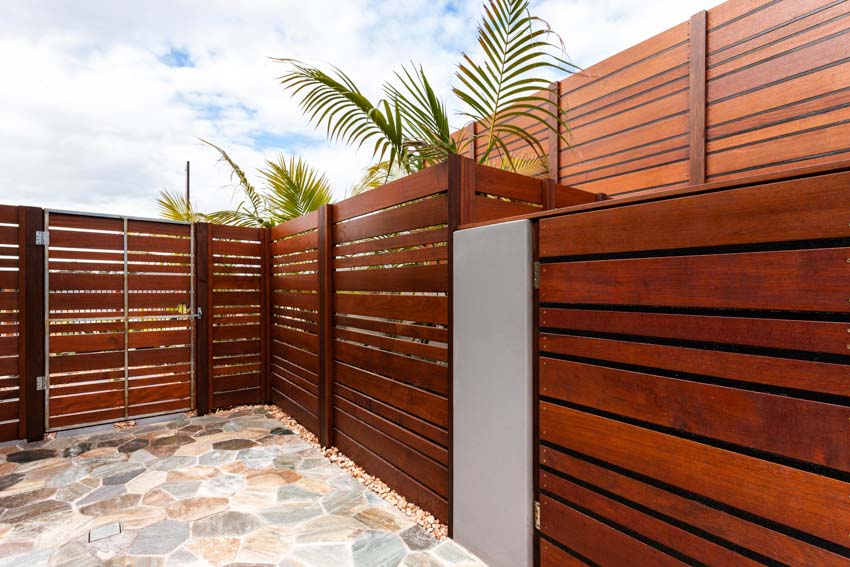
• It darkens over time: Mahogany has a deep and dark red shade. Because of its dark color, once exposed outside when used as a fence, this means that it absorbs light continuously. Its original color may get darker over time. Although this is a great trait for most types of furniture styles, this is not an advantageous trait for fences.
• Hard to identify: The identification of a true mahogany species can be difficult to the untrained eye. Always make it a point to buy from a trusted source and perhaps ask for a certification as proof of its authenticity.
Mahogany Fence Cost
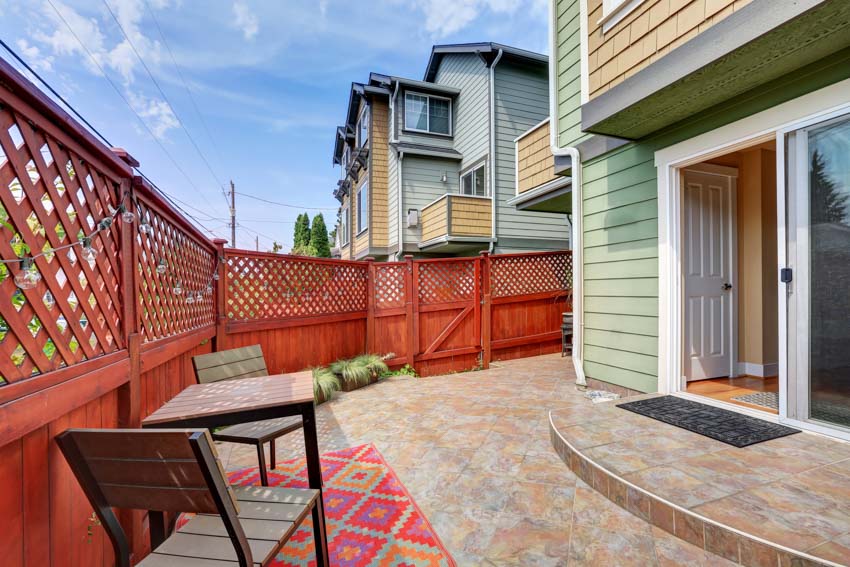
Although easily available and sustainable, it is a bit on the high end because mahogany needs to be grown in tropical areas. This means that almost all of the mahogany wood sold in the country are imported. Shipping costs and its high quality account for this high cost.
With the material cost taken into account, the next thing to check out would be the labor costs. This depends on the area that you’re in but on average, it may range anywhere from $5 to $20 per linear foot for the labor.
The terrain also needs to be considered. If you happen to build a fence in an area that’s particularly hilly or rocky, the labor may cost more.
Mahogany Fence Stain
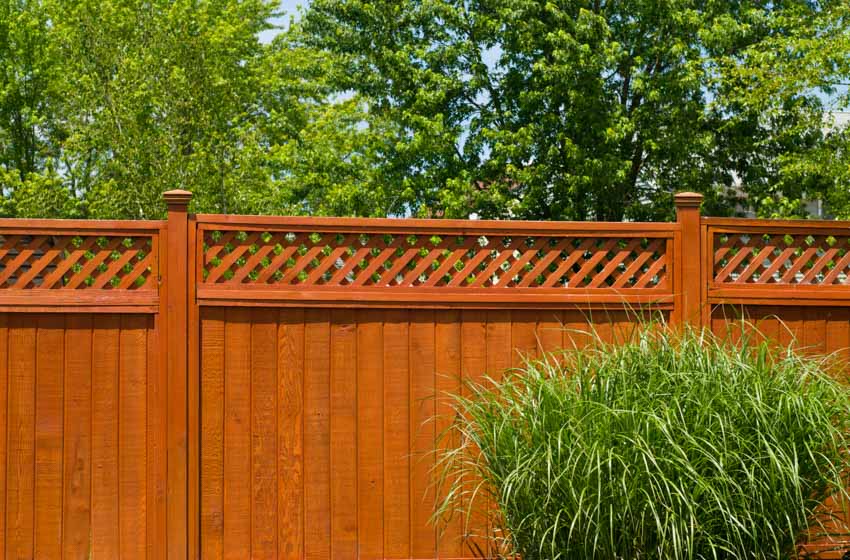
When staining, preparation is key. Make sure that the wood surface is prepared well by sanding it down with either 180 or 220 grit sandpaper. Once completely sanded down, the stain should slide on smoothly.
Some of the best products to use for mahogany wood are as follows:
• Lacquer
• Old Master wood grain filler
• Solar Lux Aniline Dye
Mahogany Fence Paint
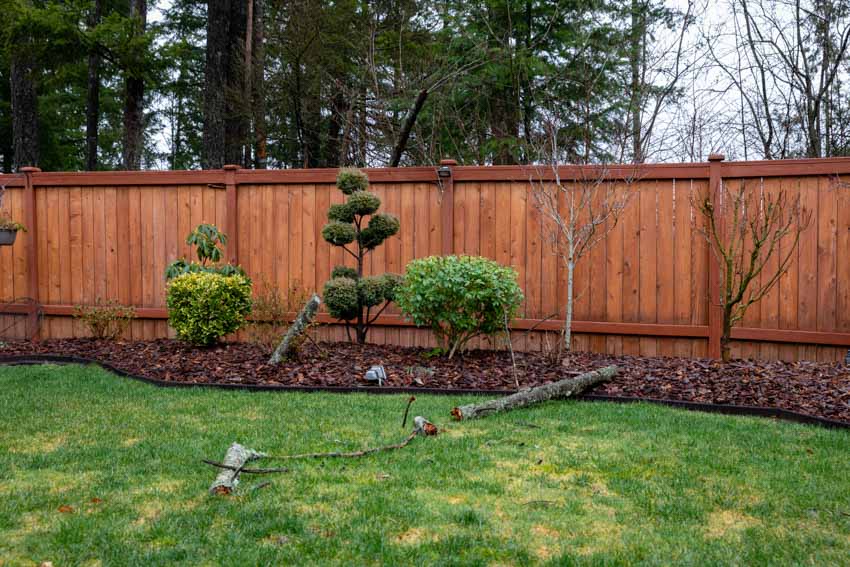
If you’re going for a glossy sheen, this is best applied with a foam roller or with a foam brush. If you’re going for a flat or eggshell finish, a regular roller or brush should be fine.
Also, if you want your paint coverage to be smooth and seamless, it would be best to first apply a coat of primer, and let it dry, before proceeding with your first paint layer.
Is Mahogany Good For Fencing?
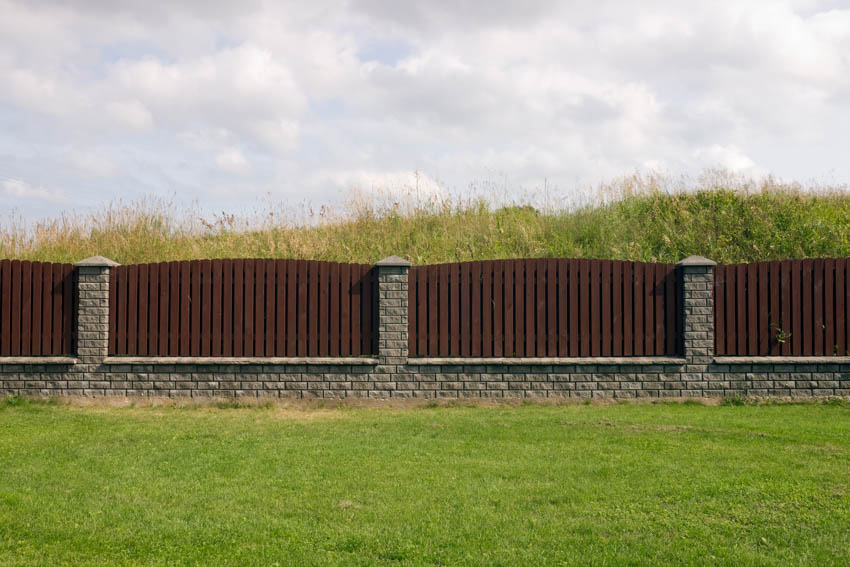
Best Outdoor Wood For Fence
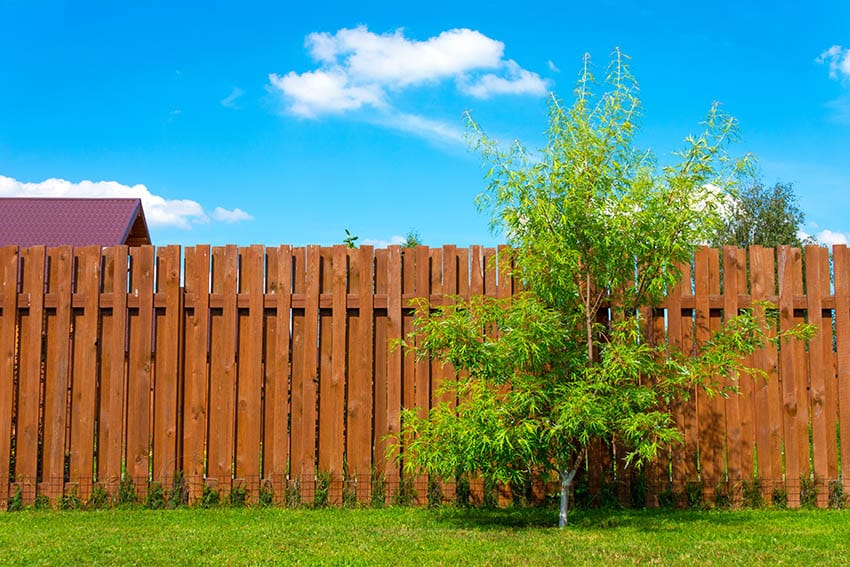
This type of wood is extensively used for fencing because of its high durability, ability to absorb paints and stains well, rot and water resistance, and the compactness of its wood grains. It does, however, come at a very high cost.
See more related content in our article about fence stain vs paint on this page.

